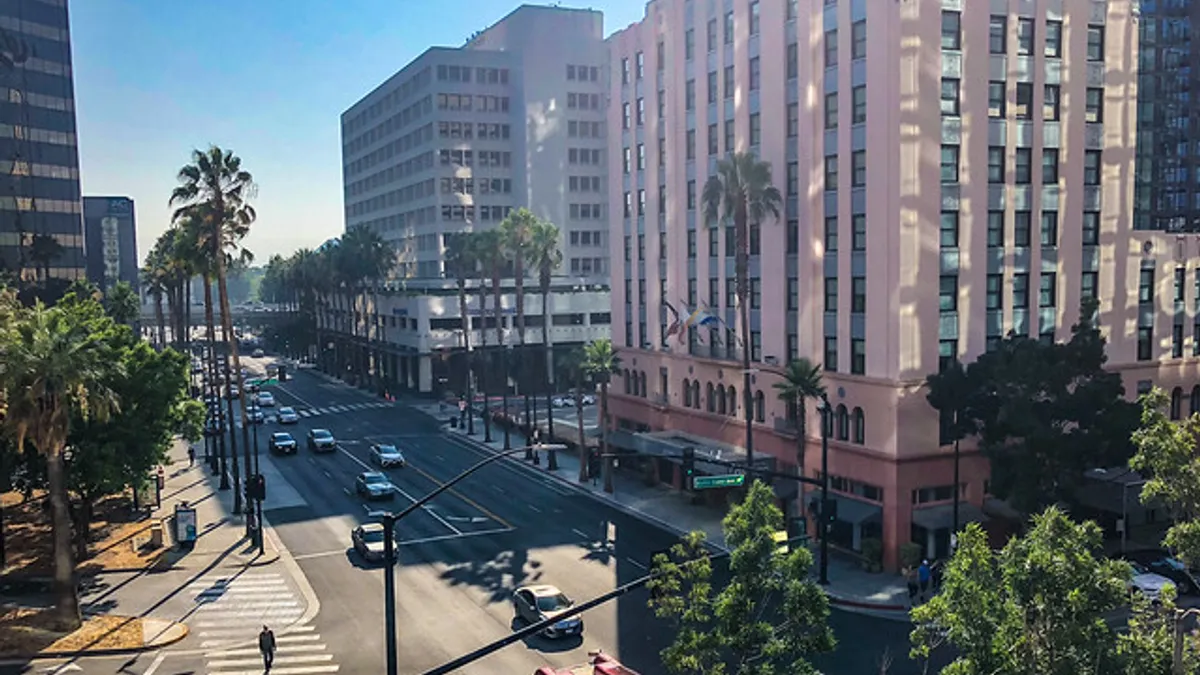Dive Brief:
- The City of San Jose, California, officially kicked off its Better Buildings program last Thursday with six partners, which have committed to reducing their collective greenhouse gas emissions by 10%. The participants — Adobe, Evergreen Valley High School, Mineta San Jose International Airport, San Jose City Hall, San Jose State University, and 488 Almaden — are responsible for 19 buildings in San Jose, a city spokeswoman confirmed to Smart Cities Dive.
- During the one-year program, those involved receive assistance from city staff, expert training, educational resources and more as they track their water and energy consumption and reduction. The program is part of the city's Climate Smart Challenge.
- Under the program, participants also must do two of the following: enroll in Total Green, the city's 100% carbon-free energy option; plan or perform improvements of retrofits to buildings to make them more energy efficient; participate in one energy/water reduction and one transportation behavior change campaign throughout the year.
Dive Insight:
The building sector is one of the biggest emitters of carbon in urban environments, second only to the transportation sector. As such, finding ways to cut those emissions has been a key pillar in various challenges to fight climate change, including this San Jose-based program and the American Cities Climate Challenge from Bloomberg Philanthropies.
San Jose has set itself ambitious targets to reduce emissions 80% community-wide by 2050. Cities across the United States have set themselves very ambitious targets, with many seeing 2030 as a major milestone in that effort. While there have been concerns that those targets are overly ambitious, some cities are starting to creatively embrace them. For instance, Charlotte, North Carolina, approved a massive solar farm to generate a quarter of its municipal electricity late last month.
For San Jose, this program is just one way it is looking to cut its buildings emissions. The city recently passed its Water and Energy Building Performance Ordinance, which requires buildings over 20,000 square feet to report energy and water use annually and make performance improvements.
The city also now has one of the strongest energy reach codes in the country that aims to make 100% electric buildings the default for new construction. That code also includes electric vehicle (EV) and solar readiness requirements to make emissions-free EV charging widely available to San Jose residents.















